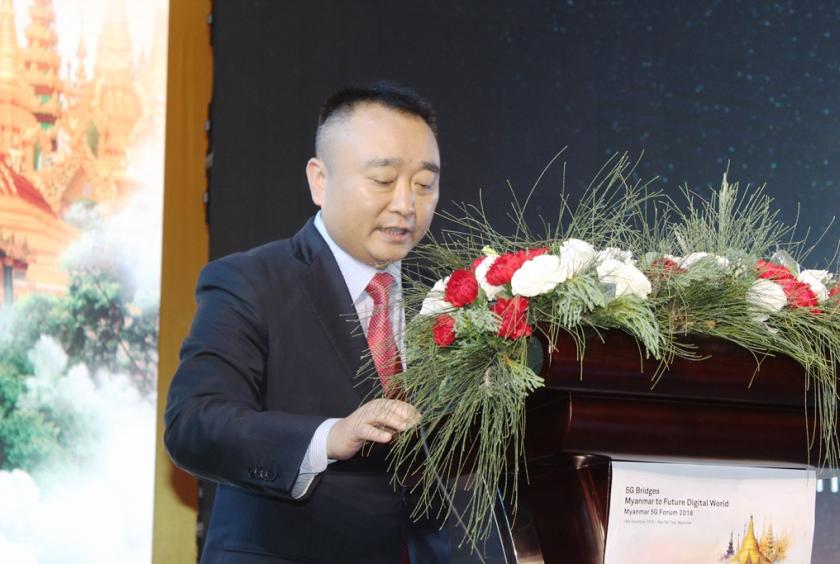
Given that the fifth generation of wireless technology will bridge Myanmar to the future digital world with a lot of new opportunities, Chinese giant Huawei Technologies Co will work collaboratively with other industry partners on 5G technology development in the country, said a company executive.
At the recent Myanmar 5G Forum2018 held on Wednesday, Jianjun Zhou, vice president of Huawei Global Carrier Business Group, said the global technology giant would prioritise on standardisation and new business models that go hand-in-hand with new use-cases to make 5G a reality in Myanmar.
“We believe that 5G will make an important contribution to Myanmar society. We are working with all of you to bring digital to every person, home and organisation for a fully connected, intelligent world,” he said.
At the forum, he stressed the importance of four key areas that Myanmar must be well-prepared to realise its 5G vision_ policy, spectrum, site, and fibre. He urged the government to support the growth of Myanmar’s digital economy. He suggested supportive policies which include national broadband white paper, national digital economy transformation master plan that positions 5G as one of the key enablers.
According to the executive, the regulator needs to adopt national spectrum policy measures to encourage long-term heavy investments in 5G networks by providing long-term licences, clear renewal process and spectrum roadmap, etc.
“If the government can open up more public resources for site deployment, that will greatly reduce costs. Let’s initiative the site alliance to benefit not only 4G and 5G, but also benefit the whole vertical market including smart city, remote education and e-government,” he said.
He urged the government to encourage the backbone transition to fibre, as it is the key to 5G. To him, the success of 5G will be heavily reliant on national governments and regulators. Most notably, the speed, reach and quality of 5G services will be dependent on governments and regulators supporting timely access to the right amount and type of spectrum, and under the right conditions.
“These are the changes we will see in future 5G digital world. From all angles, 5G should be ready to use, affordable, and the demand is real. Most importantly, the demand must be real, especially in an emerging market like Myanmar,” he said.
Immediately, 5G can be deployed for WTTx. Currently, there are 230 WTTx networks around the world. They use 4G technology to connect more than 7.5 million homes. The business model is mature, and it is ready for 5G, he said.
“In the near future, we will also have more Cloud X applications such as Cloud PC, cloud gaming, cloud VR/AR and IoT related… Imagine this: With a single digital ID, wherever you go, the network will travel with you. Your content and services will travel with you. And your experience will flow seamlessly. This is 5G,” said the executive.









